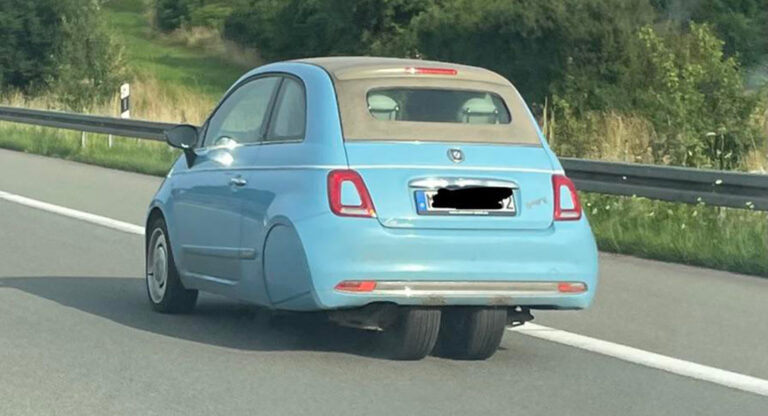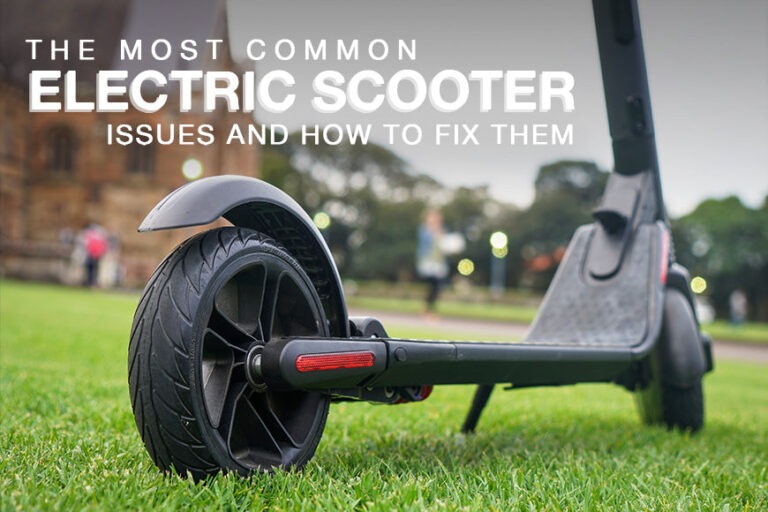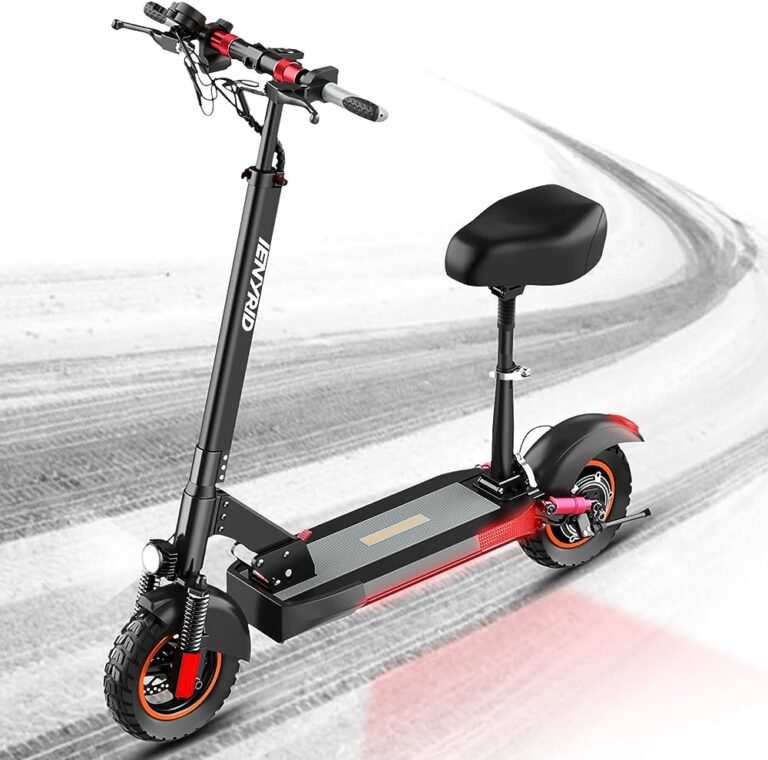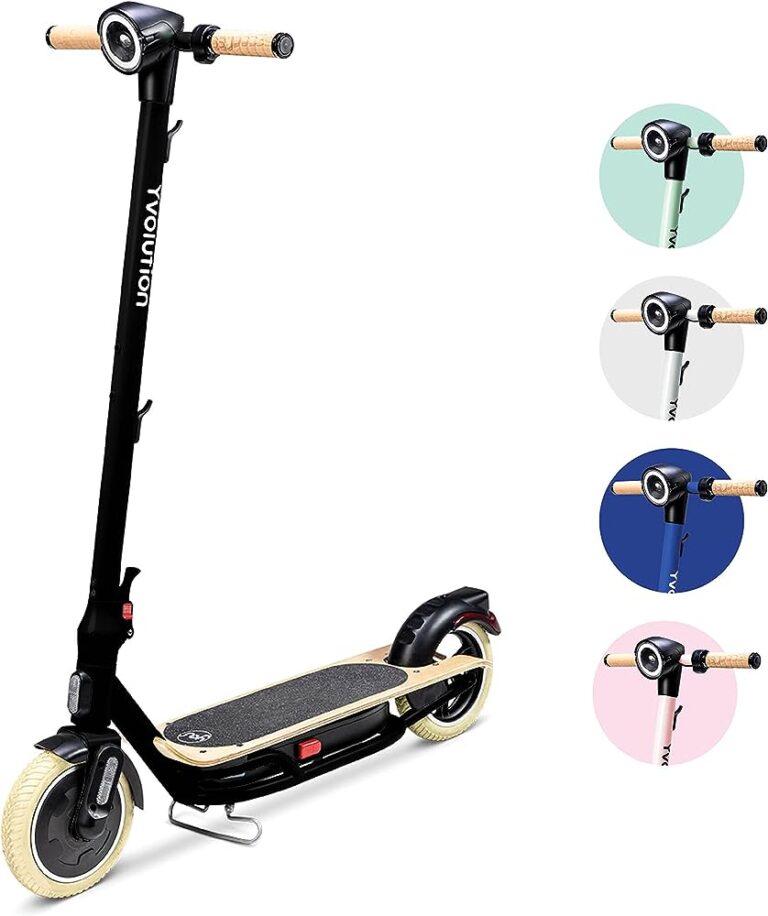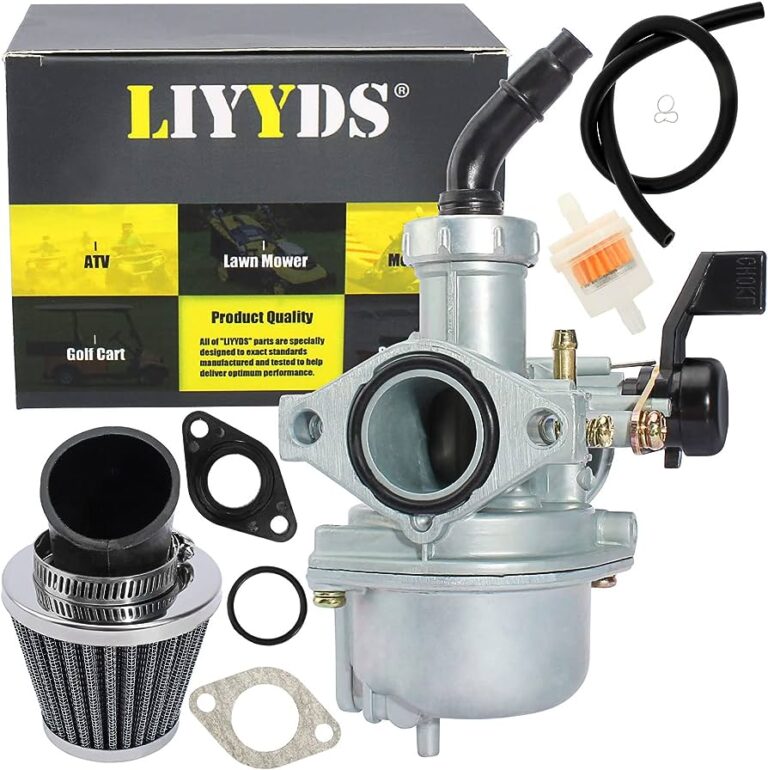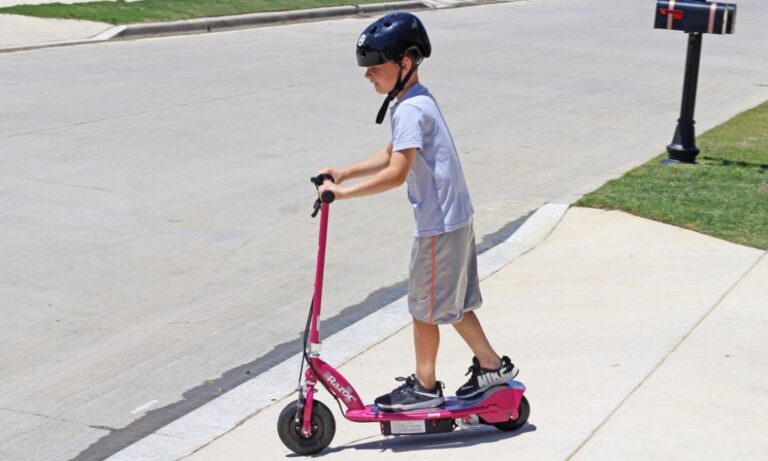Vespa Scooter Not Starting: Troubleshoot and Revive with Expert Tips!

Vespa scooter not starting could be due to a dead battery or a faulty ignition system. Make sure to check the battery and spark plugs for any issues.
*Vespa Scooter Not Starting: Potential Causes*
Having trouble starting your Vespa scooter? Various factors can contribute to this issue, such as a faulty ignition switch, a dead battery, clogged fuel lines, or a damaged spark plug. Diagnosing the problem accurately is crucial for getting your Vespa back on the road.
Vespa Scooter Not Starting: Potential Causes
Is your beloved Vespa scooter refusing to start? Don’t worry, we’ve got you covered. There can be several reasons behind a Vespa scooter’s starting issues. Let’s explore some potential causes and troubleshoot the problem together.
Battery Issues:
- Low battery voltage: If your Vespa scooter is not starting, the battery might be discharged or have low voltage. Consider the following possibilities:
- Battery drain due to leaving the lights or accessories on for an extended period.
- A faulty charging system that fails to charge the battery properly.
- Corroded battery terminals: Over time, the battery terminals may accumulate corrosion, hindering the flow of electricity. Look out for these signs:
- Presence of greenish or whitish residue on the battery terminals.
- Difficulty in establishing a firm connection between the battery and scooter’s electrical system.
- Dead battery: In some cases, the battery might be completely drained or non-functional. Look for these indications:
- No response from the starter motor when you try to start the scooter.
- Dim lights or no response from electrical components when the ignition is turned on.
Fuel System Problems:
- Empty fuel tank: It might sound obvious, but sometimes the simplest explanations are the best. If your scooter isn’t starting, make sure you have enough fuel. Keep an eye out for:
- A fuel gauge indicating low or no fuel.
- Experiencing sudden power loss or sputtering while riding.
- Clogged fuel filter: A clogged fuel filter can restrict the flow of gasoline to the engine, leading to starting issues. Consider these signs:
- Irregular idling or stalling while the scooter is running.
- Difficulty starting the engine after it has been sitting for a while.
- Contaminated fuel: Poor quality or contaminated fuel can cause starting problems. Watch out for the following symptoms:
- Rough engine performance or misfires.
- Unusual smell or discoloration of the fuel.
Ignition System Malfunctions:
- Faulty spark plug: The spark plug plays a crucial role in igniting the fuel-air mixture inside the engine. Check for these signs of a faulty spark plug:
- Difficulty starting the engine, especially in cold conditions.
- Poor acceleration or engine misfires during acceleration.
- Ignition coil failure: The ignition coil generates the high voltage necessary to create a spark. Look out for these indications of a failing ignition coil:
- Engine misfires or stalling, especially under heavy load.
- No spark or weak spark when testing the spark plug.
- Damaged ignition switch: If the ignition switch is damaged or worn out, it may prevent the scooter from starting. Consider these signs:
- No response when turning the key or pressing the ignition button.
- Intermittent starting issues or the need to wiggle the key to start the scooter.
Remember, these are just some of the potential causes behind a Vespa scooter not starting. Professional diagnosis by a qualified mechanic is highly recommended if you are unable to troubleshoot the problem. Now that you’re aware of the possible culprits, we hope you’ll get your Vespa back on the road in no time!

Credit: www.getyourguide.com
*Troubleshooting Vespa Scooter Starting Problems*
If your Vespa scooter is experiencing starting problems, our troubleshooting guide is here to help. From checking the battery and fuel supply to examining the ignition system, we provide step-by-step solutions to resolve the issue and get you back on the road.
Troubleshooting Vespa Scooter Starting Problems
Is your Vespa scooter giving you a hard time starting? Fret not, as we have some handy troubleshooting tips to help you get your beloved ride up and running again. From checking the battery’s charge to inspecting spark plugs and verifying fuel supply, we’ve got you covered.
Let’s dive into these troubleshooting steps so you can get back on the road in no time.
Checking The Battery’S Charge:
- Voltmeter reading: Use a voltmeter to check the battery’s charge. Connect the voltmeter to the battery terminals and ensure it reads around 12.6 volts. Anything lower could indicate a low battery charge.
- Battery terminals: Inspect the battery terminals for any signs of corrosion or loose connections. Clean any corrosion using a wire brush and tighten any loose connections to ensure proper electrical contact.
Inspecting And Cleaning Spark Plugs:
- Removal: Remove the spark plug wire by gently pulling on the boot. Use a spark plug socket wrench to loosen and remove the spark plug from the cylinder head.
- Condition: Examine the spark plug’s condition. Look for signs of fouling, such as carbon deposits or oil residue. If fouled, it may need cleaning or replacement.
- Cleaning: Use a wire brush or specialized spark plug cleaner to remove any deposits on the spark plug. Avoid using abrasive materials that could damage the electrode or insulator.
- Gap measurement: Check the spark plug gap using a feeler gauge. Adjust the gap according to the manufacturer’s specifications if necessary.
- Reinstallation: Reinstall the spark plug, ensuring it is properly tightened. Reconnect the spark plug wire to the spark plug boot securely.
Verifying Fuel Supply And Flow:
- Fuel level: Check the fuel gauge or visually inspect the fuel tank to ensure an adequate fuel supply. Refill if necessary.
- Fuel filter: Locate the fuel filter and inspect it for any signs of clogs or dirt accumulation. If dirty, replace the fuel filter to maintain proper fuel flow.
- Fuel lines: Examine the fuel lines for any leaks, cracks, or blockages. Repair or replace damaged or clogged fuel lines to ensure the smooth flow of fuel.
- Fuel valves: Check the fuel valves to ensure they are in the correct position for fuel to flow into the engine. Verify that the fuel valve is open or set to the “ON” position.
Testing The Ignition System:
- Spark plug ignition: Verify that the spark plug is producing a spark when the engine is cranked. If no spark is observed, it may be due to a faulty ignition coil, CDI unit, or wiring. Consult a professional for further assistance.
- Ignition switch: Check the ignition switch for any signs of wear or damage. Ensure that the switch is properly functioning and making proper electrical contact.
- Safety switches: Inspect any safety switches, such as the side stand or brake switches, as they can interrupt the ignition system. Ensure these switches are not stuck or malfunctioning.
By following these troubleshooting steps, you can diagnose and resolve common starting problems with your Vespa scooter. Remember, safety always comes first, so if you’re unsure about any step or encounter a more complex issue, it’s best to consult a certified Vespa technician for their expert guidance.
Now, get ready to enjoy the smooth ride of your Vespa once again!
*Reviving A Vespa Scooter That Won’T Start*
If your Vespa scooter won’t start, don’t panic! There are several troubleshooting steps you can take to revive it and get back on the road in no time. From checking the battery and fuel system to inspecting the spark plug and ignition system, this guide will help you diagnose and fix the issue.
Reviving A Vespa Scooter That Won’T Start
Is your beloved Vespa scooter refusing to start? Don’t worry, we’ve got you covered. In this section, we’ll explore some common issues that could be preventing your scooter from starting and provide you with the steps to revive it. Let’s get started!
Replacing A Dead Battery:
If your Vespa scooter isn’t starting, a dead battery might be the culprit. Here’s how you can tackle this issue:
- Check the battery connection to ensure it is secure.
- If the battery is old or damaged, consider replacing it with a new one.
Cleaning Or Replacing Spark Plugs:
Spark plugs play a vital role in igniting the fuel mixture in the engine. If they’re dirty or faulty, your scooter may fail to start. Follow these steps:
- Remove the spark plug using a socket wrench.
- Examine the spark plug for signs of wear, corrosion, or carbon buildup.
- If it’s dirty, clean it using a wire brush. In case it’s damaged, replace it with a new one.
Cleaning The Carburetor:
A clogged or dirty carburetor can hinder the fuel delivery to the engine, preventing the scooter from starting. Here’s how you can address this issue:
- Locate the carburetor and remove it carefully.
- Clean the carburetor using a carburetor cleaner spray, ensuring that all the jets and passages are free from debris.
- Reinstall the carburetor and check if the scooter starts successfully.
Cleaning Or Replacing The Fuel Filter:
A clogged fuel filter can obstruct the fuel flow, leading to starting issues. Consider the following steps:
- Find the fuel filter and remove it from the fuel line.
- If it’s dirty, clean it thoroughly using a mild solvent and a brush.
- If cleaning doesn’t resolve the issue, replace the fuel filter with a new one.
By following these troubleshooting steps, you can revive your Vespa scooter and get back on the road in no time. Remember, if the issue persists or you’re unsure about these procedures, it’s always best to consult a professional mechanic. Happy riding!
**Expert Tips To Keep Your Vespa Scooter Running Smoothly**
Ensure your Vespa scooter starts smoothly by following these expert tips. Check the spark plug, fuel filter, and battery connection, and make sure the ignition switch is on. If the problem persists, consult a professional mechanic.
Expert Tips To Keep Your Vespa Scooter Running Smoothly
Your trusty Vespa scooter is a reliable mode of transportation that gets you where you need to go. To ensure it starts effortlessly and runs smoothly each time, it’s essential to follow some expert tips for optimal performance. By taking care of regular maintenance and inspections, using quality fuel and oil, and adopting riding habits that promote efficient starting, you can keep your Vespa scooter in top-notch condition.
Read on to discover the key tips to ensure your Vespa scooter always starts like a dream.
Regular Maintenance And Inspection Recommendations
To keep your Vespa scooter running smoothly, regular maintenance and inspections are crucial. Implement the following practices to maintain its performance:
- Check your battery: Ensure the battery connections are clean and secure. Consider using a battery maintainer during long periods of inactivity.
- Inspect tires: Regularly check your tire pressure and tread depth. Bald or underinflated tires can impact your scooter’s performance and starting ability.
- Maintain proper lubrication: Pay attention to lubricating crucial components such as the throttle, cables, and brake levers. Lubrication prevents rust and ensures smooth functioning.
- Inspect the spark plug: The spark plug is vital for starting your scooter. Regularly inspect and clean or replace it if necessary.
- Keep electrical connections clean: Clean and secure electrical connections prevent starting issues. Check the wiring and connectors for any signs of corrosion or damage.
Quality Fuel And Oil Usage Guidelines
Using quality fuel and oil is essential for optimum performance and starting reliability. Follow these guidelines for your Vespa scooter:
- Choose premium fuel: Opt for high-quality fuel with the correct octane rating. Avoid using old or contaminated fuel that can cause starting problems.
- Use recommended oil: Always use the oil recommended by the manufacturer. The right oil keeps your engine lubricated, enhancing overall performance.
- Regular oil changes: Change your scooter’s oil according to the manufacturer’s guidelines. Fresh oil maintains engine health and smooth starting.
Riding Habits That Contribute To Optimum Performance And Starting
In addition to regular maintenance and using quality fuel and oil, your riding habits play a significant role in your scooter’s performance and starting ability. Consider the following practices:
- Warm-up the engine: Allow your scooter’s engine to warm up before riding. This helps the engine operate at its best and ensures smoother starting.
- Avoid frequent short trips: Constantly starting and stopping your scooters for short trips can put stress on the battery and starter. Combine shorter trips whenever possible.
- Smooth acceleration and deceleration: Gradual acceleration and deceleration eliminate unnecessary strain on your scooter’s engine and components, promoting smoother starts.
- Proper storage techniques: If storing your scooter for an extended period, use a fuel stabilizer, and disconnect the battery. Follow the manufacturer’s instructions for correct storage.
By following these expert tips for regular maintenance, using quality fuel and oil, and adopting riding habits that promote efficient starting, you’ll keep your Vespa scooter in excellent shape. Remember, a well-maintained scooter is not only reliable but also ensures a smooth and stress-free riding experience every time.
**Professional Assistance: When To Seek Help**
Experiencing trouble getting your Vespa scooter to start? Seek professional assistance for expert help in diagnosing and resolving the issue. Don’t delay, get your scooter back on the road with professional support.
The Vespa Scooter is a reliable and efficient mode of transportation that offers a convenient way to maneuver through traffic. However, there are times when you might encounter issues with your Vespa not starting. While some problems can be resolved with a bit of troubleshooting, there are instances where professional assistance becomes necessary.
In this section, we will discuss the indications of complex issues that require professional attention and the options available for seeking help.
Indications Of Complex Issues Requiring Professional Attention:
- Persistent starting problems: If your Vespa refuses to start even after attempting the basic troubleshooting steps, it might signify a more complicated issue that needs professional attention.
- Unusual engine noises: Strange sounds coming from your Vespa’s engine, such as rattling or grinding noises, could be indicative of a significant problem. A qualified mechanic can assess the issue accurately and provide the best course of action.
- Electrical malfunctions: Starting problems can also arise from electrical malfunctions in your Vespa scooter. If you suspect an electrical issue, it is advisable to seek professional help to avoid worsening the problem.
- Fuel system complications: Issues related to the fuel system, such as clogged fuel lines or problems with the fuel pump, can prevent your Vespa from starting. Professional assistance is crucial in diagnosing and resolving fuel system complications.
- Complex mechanical problems: While some mechanical problems can be addressed by the owner, there are instances where complex issues require the expertise of a qualified Vespa mechanic. Examples of such problems include a malfunctioning starter motor or a faulty ignition system.
Authorized Vespa service centers and qualified mechanics:
- Authorized Vespa service centers: Vespa provides authorized service centers that specialize in diagnosing and repairing Vespa scooters. These centers have trained professionals who are well-versed in handling complex issues and ensuring proper repairs.
- Qualified mechanics: Apart from authorized service centers, there are experienced mechanics who specialize in Vespa scooters. These mechanics have in-depth knowledge of Vespa models and can efficiently diagnose and fix any problems your scooter may be facing.
Remember, seeking professional assistance for your Vespa scooter not starting is crucial when you encounter complex issues that go beyond basic troubleshooting steps. Whether it’s persistent starting problems, unusual engine noises, electrical malfunctions, fuel system complications, or complex mechanical problems, reaching out to an authorized Vespa service center or a qualified mechanic ensures that your scooter receives the expertise and care it requires.
*Preventing Starting Issues: Maintenance Tips*
Maintain your Vespa scooter to avoid starting issues. Implement regular maintenance tips to ensure a smooth and hassle-free ride.
Preparing Your Vespa For Smooth Starts: Essential Maintenance Tips
Is your beloved Vespa scooter having trouble starting lately? Don’t worry, we’ve got you covered! Preventing starting issues is crucial for a seamless Vespa riding experience. By following these maintenance tips, you can ensure that your scooter starts effortlessly every time.
Let’s dive in!
Battery Care And Maintenance:
- Regularly inspect the battery terminals for any signs of corrosion. If you notice corrosion, clean the terminals using a mixture of baking soda and water. Rinse thoroughly and dry before reconnecting.
- Ensure that the battery is securely fastened to prevent any vibrations that may lead to loose connections.
- Keep an eye on the battery fluid level and top it up if necessary with distilled water.
- Consider investing in a battery tender or maintainer to keep the battery charged during long periods of inactivity.
- Keep the battery terminals and connectors coated with a thin layer of petroleum jelly to prevent corrosion.
Regular Cleaning And Inspection Routines:
- Clean your Vespa regularly using mild soap and water to remove dirt and grime. Avoid using abrasive cleaners that may damage the scooter’s surface.
- Pay close attention to the spark plug and clean it or replace it if necessary. A clean spark plug ensures proper combustion and smoother starts.
- Inspect the fuel lines for any signs of wear or leaks. Replace any damaged or brittle fuel lines promptly.
- Check the air filter and clean or replace it if dirty. A clogged air filter can hinder proper airflow and affect starting performance.
- Look out for any loose bolts or screws and tighten them as needed. Vibration during rides can cause components to loosen over time.
Storing Your Vespa Properly During Periods Of Inactivity:
- Before storing your scooter for an extended period, fill the fuel tank to minimize the risk of condensation-related issues.
- Add a fuel stabilizer to the tank to prevent fuel deterioration and clogging in the carburetor.
- Keep the scooter in a dry and well-ventilated area to avoid moisture buildup that could lead to rust.
- If possible, elevate the Vespa using a center stand or a front and rear stand to relieve weight on the tires and suspension.
- Consider using a breathable cover to protect your scooter from dust, sunlight, and other outdoor elements while in storage.
By following these preventive maintenance tips, you can keep your Vespa scooter in top-notch condition and avoid common starting issues. With a little care and attention, you’ll be zipping through the streets with ease and style in no time. Happy riding!
*Vespa Scooter Starting Problems: Faq*
Experiencing issues with your Vespa scooter not starting? Find answers to frequently asked questions about Vespa scooter starting problems to troubleshoot and resolve the issue efficiently.
Vespa Scooter Starting Problems: Faq
Having trouble starting your Vespa scooter? Don’t worry, we’ve got you covered. In this section, we will address some common questions and concerns regarding Vespa scooter starting issues. Read on to find the answers you need to get your scooter back on the road.
Why Won’T My Vespa Scooter Start?
Here are some possible reasons why your Vespa scooter won’t start:
- Dead battery: Ensure that your battery is fully charged and free from corrosion.
- Fuel issues: Check if you have enough fuel in the tank and verify that the fuel valve is open.
- Ignition problems: Confirm that the ignition switch is set to “ON” and the kill switch is in the correct position.
- Spark plug fault: Examine your spark plug for wear or damage and replace if necessary.
- Faulty starter motor: If you hear a clicking sound when trying to start your scooter, it might indicate a problem with the starter motor.
How Can I Troubleshoot A Vespa Scooter That Won’T Start?
If your Vespa scooter is giving you starting troubles, here are some steps you can follow to troubleshoot the issue:
- Check the battery: Make sure your battery connections are secure and clean. Test the voltage using a multimeter.
- Inspect the fuel system: Verify that there are no blockages in the fuel line or the carburetor. Clean or replace the fuel filter if needed.
- Examine the spark plug: Remove the spark plug and inspect it for fouling or damage. Clean or replace the spark plug as necessary.
- Verify the wiring: Ensure that all wiring connections are secure and free from corrosion or damage.
- Seek professional help: If you’ve tried these troubleshooting steps and still can’t solve the problem, it’s best to consult a professional Vespa mechanic.
Why Does My Vespa Scooter Struggle To Start In Cold Weather?
Cold weather can affect the starting process of your Vespa scooter due to several factors:
- Thicker oil: Cold weather causes the engine oil to become thicker, making it harder for the engine to turn over. Consider using a lower viscosity oil during winter months.
- Fuel evaporation: In colder temperatures, gasoline evaporates more slowly, making it more challenging for the engine to receive an adequate fuel-air mixture. Consider using a fuel stabilizer to prevent evaporation.
- Battery performance: Cold weather can reduce battery performance, making it more difficult to provide the necessary power to start the scooter. Keep your battery charged and consider using a battery tender or heated garage if possible.
What Should I Do If My Vespa Scooter’S Electric Starter Doesn’T Work?
If your Vespa scooter’s electric starter fails to function, try the following steps:
- Check the battery: Ensure that your battery is fully charged and in good condition.
- Inspect the starter motor: Verify that the starter motor is securely connected and isn’t damaged. If necessary, replace the starter motor.
- Examine the wiring: Check for any loose or damaged wiring connections. Repair or replace as needed.
- Test the ignition switch: Ensure that the ignition switch is functioning properly. If not, replace it.
Remember, if you’re unsure about performing any troubleshooting steps yourself, it’s always best to consult a qualified mechanic to avoid causing further damage to your Vespa scooter.
Frequently Asked Questions For Vespa Scooter Not Starting
Why Will My Vespa Not Start?
Possible answer: The Vespa may not start due to issues like a dead battery, fuel problems, spark plug failure, or a faulty ignition switch.
How Do You Manually Start A Vespa?
To manually start a Vespa, turn the key to the “on” position, pull the brake lever, and press the starter button.
Why Did My Vespa Suddenly Stop Working?
Your Vespa suddenly stopped working because of a variety of potential issues. Seek professional assistance to diagnose the specific problem.
Can You Jump Start A Vespa?
Yes, you can jump start a Vespa by following proper procedures and using jumper cables.
Conclusion
Troubleshooting a Vespa scooter that won’t start can be a frustrating experience. However, by following some simple steps, you can often identify and resolve the issue on your own. First, check the battery connections and make sure they are secure.
Next, inspect the spark plug and replace it if necessary. Take a look at the fuel system and ensure there is enough fuel and that the fuel valve is open. If these steps don’t solve the problem, it might be worth seeking professional assistance from a mechanic who specializes in Vespa scooters.
Remember to perform regular maintenance on your scooter to prevent starting issues in the future. By keeping your Vespa well-maintained and following these troubleshooting tips, you’ll be back on the road in no time, enjoying the freedom and convenience that this iconic scooter provides.

